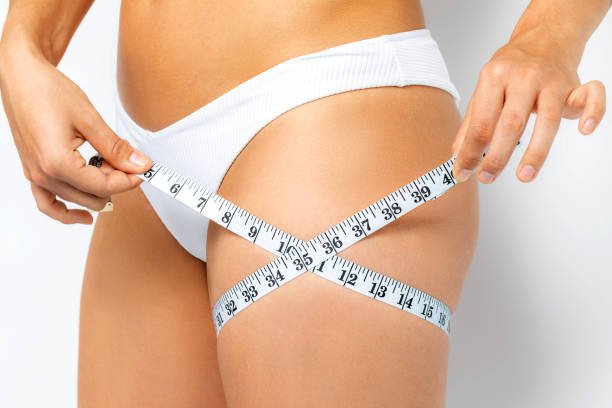
Pay Attention to Sarcopenia in Young People. The Risk of Heart Disease Increases. 2 Tips to Prevent Sarcopenia.
According to death statistics, heart disease is still the second among the 10 causes of death in the world. On average, one person dies from heart disease every 26 minutes. When people talk about the causes of heart disease, they always think of smoking, poor diet, and poor rest. Normal and other risk factors are associated together. However, what most people ignore is that the lack of exercise lifestyle of modern people not only aggravates muscle loss, but has even caused “sarcopenia” and increases the risk of heart disease.
When the body’s muscle mass is insufficient, it may lead to heart muscle weakness. This phenomenon is no longer limited to the elderly. Just like bone loss, the degree and speed vary from person to person. Aging and chronic diseases such as heart disease and diabetes etc., will all cause “sarcopenia”.
What exactly is “sarcopenia”? Are there any precursors to sarcopenia? How are sarcopenia and heart disease related? Let this article help you understand the dangers and prevention of sarcopenia, maintain healthy muscle strength, and say no to heart disease!
What is sarcopenia? Explanation of causes of muscle loss
There are three types of muscles in the human body: skeletal muscle, smooth muscle, and cardiac muscle. The “muscle” we generally refer to generally refers to skeletal muscle, which accounts for 30-40% of the total body weight. In addition to protecting joint diseases and maintaining human body posture, it is also our The key to all activities, including basic behaviors such as chewing and breathing, also requires the participation of skeletal muscles, which shows the importance of skeletal muscles. Muscles are also factories that store and convert energy and can provide timely energy for exercise. More importantly, muscles can also help lymph and blood flow back to maintain immune and heart health.
When muscles are gradually lost due to age, uneven diet, chronic diseases or long-term bed rest, the human body will suffer from loss of movement and function. If after diagnosis, it is found that there is a decrease in muscle mass, weakened muscle strength, and weakened muscle endurance, it is called It is called “sarcopenia”; for example, the walking gait is unstable, easy to fall, feeling weak and tired, etc. According to the Academy of Family Medicine, muscle mass will be lost rapidly at a rate of 8% every 10 years after the age of 40 and 15% every 10 years after the age of 70.
Although young people lose muscle at a relatively slow rate, modern people’s living habits of sitting more and moving less may still cause sarcopenia. Don’t take it lightly. We recommend exercising for at least 30 minutes a day. The amount of exercise can be accumulated in stages, but every time For at least 10 consecutive minutes.
Sarcopenia increases risk of heart disease
The heart is the core of the human body, responsible for contraction and relaxation, and transporting blood and oxygen throughout the body. Muscles also play the key role in helping blood return to the heart. If there is sarcopenia, the heart must work harder. In the long run, it will not only put a huge burden on the heart, but also cause problems with cardiopulmonary function.
Muscles are closely related to human metabolism. For example, the regulation of blood sugar and protein storage require the help of muscles. When muscles are reduced, the basal metabolic rate will also decrease, so the body’s rate of metabolizing cholesterol and triglycerides will slow down, causing fat to accumulate in the body, which in the long run can lead to diabetes, metabolic syndrome, and even heart disease.
Literature in the Journal of Epidemiology and Community Health also shows that middle-aged people with less muscle mass have an increased risk of heart disease by up to 81%.
How to diagnose sarcopenia? Just measure your calf circumference and you’ll know!
Muscle mass needs to be measured with precise instruments. According to research from the Academic Foundation for the Prevention and Treatment of Liver Disease, a woman with a height of 160 cm and a weight of 55 kg, for example, has a muscle mass of more than 9 kg; a man with a height of 170 cm and a weight of 80 kg, for example, has a muscle mass of at least It needs to be greater than 14 kilograms to meet the most basic muscle mass standards.
If there is no instrument to measure muscle mass, the following two measurement methods can also be used as simple ways to determine at home:
- Finger measurement method:
Make a circle with the index fingers and thumbs of both hands, and use this circle to cover the thickest part of the calf. If there are still many gaps in the fingertips, the risk of sarcopenia is higher. - Tape measurement method:
Use a tape measure to measure leg circumference. After the calf and thigh are perpendicular to each other at 90 degrees, use a measuring tape to go around the calf and measure the circumference of the thickest part of the calf. The average calf circumference of people is 33.8 cm. If the calf circumference is less than 33 cm, the probability of suffering from sarcopenia is greater. In addition, if you find it difficult to move, fall frequently, or cannot wring out the towel, you should also pay attention to whether there is sarcopenia.

2 tips to prevent sarcopenia and avoid muscle loss
Regular exercise
Regular exercise and adequate protein intake are the only ways to prevent and improve sarcopenia. To effectively increase muscle mass, it is recommended to focus on weight-bearing and resistance training. Although muscle fibers will be temporarily damaged and cause soreness after exercise, muscles can use protein to repair and increase muscle mass to adapt to the training intensity, thereby delaying muscle loss. Effect.
In order to avoid sports injuries, it is recommended that people who have not exercised for a long time, the elderly, patients with chronic diseases or sarcopenia should discuss suitable exercise methods with their doctors and ask a coach to guide them in correct movements.
Get enough protein
It is recommended that each person consume 1.2~1.5 grams of protein per body weight per day. For a 55 kg woman, she should consume at least 66 grams of protein per day. In addition, the Ministry of Health and Welfare also recommends that people spend at least 15 minutes in the sun every day to promote the body’s conversion of vitamin D. Sufficient vitamin D not only helps prevent osteoporosis, but is also an important vitamin for maintaining muscle function and strength and promoting muscle protein synthesis.













